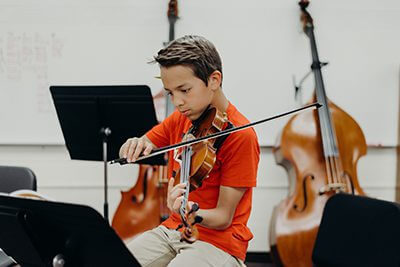August 28, 2019

Charting A Path In A New Academic Year
In school and in life, goal setting is good. Goals serve as essential mileposts, helping to define pathways and measure progress, and leading to a greater sense of personal accomplishment and satisfaction. Meaningful goal setting is particularly important as students start a new academic year, and as they reflect on their priorities, their values, and their signals of success.
Practical Goal Setting and Resiliency
“To narrow and pinpoint reasonable, achievable, and admirable goals for a new year requires both big-picture thinking and ground-level planning,” writes Matt Levinson in Edutopia. He shares a favorite illustration of the multifaceted components for goal setting, explaining that good goals need “boulders (big picture thinking), rocks (the translation of those big ideas), and sand (the execution of the details). Goals that don’t contain all three components are doomed to fall short.”
In her Psychology Today article, Marilyn Price-Mitchell underscores a similar theme, emphasizing that goals should get granular. “Goals must be much more specific than raising a grade or improving performance on the soccer field,” she says, and offers students a four-step method to setting them:
- I will (state the goal)
- By doing what? (the primary activities to achieve the goal)
- When? How? With Whom? (the specific tactics)
- Measured by (clear outcomes)
Achieving a goal is rarely a linear path, and pursing a goal will inevitably lead to both ups and downs, making resilience a foundational capability for students of all ages. In her “New Yorker” article, Maria Konnikova highlighted the work of Emmy Werner, a developmental psychologist who studied a group of nearly 700 children and assessed their responses to stress. Konnikova explains that Werner found “from a young age, resilient children tended to ‘meet the world on their own terms.’ They were autonomous and independent, would seek out new experiences, and had a ‘positive social orientation.’ Perhaps most importantly, the resilient children had what psychologists call an ‘internal locus of control’: they believed that they, and not their circumstances, affected their achievements. The resilient children saw themselves as the orchestrators of their own fates. In fact, on a scale that measured locus of control, they scored more than two standard deviations away from the standardization group.”
Expanding the Definition of Success
Mounds Park Academy Upper School director Mark Segal agrees that clear, concise goals are essential, while emphasizing that goals should be part of a larger developmental journey. “We encourage students to focus on progress, not perfection,” he says. “One of the biggest academic pitfalls for students is when they set goals that may not be reasonable or fulfilling.” Segal recommends that students create incremental goals that steadily move them toward their target, and that they celebrate each step of the way. He also advises students to think beyond academics and include goals that reflect who they want to be as a whole person. “Students should think about how they want to be in their friendships, how they can continue to expand their social circle, and what they want their lives to look like after MPA,” he says. “Students should see goal setting as a time to revisit past interests or try out new activities, to take advantage of everything their school experience has to offer.”
In her senior speech, recent MPA graduate Claire Hanson ’19 spoke on a similar theme, describing growth and goal setting not in relation to flawless execution, but as part of a topic that can be scary for many students—failure. “My failures … have taught me more about myself: my resilience, my talents, and my areas for improvement. Every one of my failures, big or small, has developed my character in an overwhelmingly positive way. That’s the best part about failing: it’s momentary and motivational.” She reflected that, “With every failure, I’ve had my share of successes. The two go hand-in-hand. Most importantly, I am proud of my community for creating a space in which I could fail safely and succeed proudly.”
Segal sees that freedom to explore, to get comfortable with imperfection, as a key opportunity to empower students. “As a parent, it’s tempting to want to show students the way, to define their goals for them, to tell them what success means. But it’s so much more impactful when students define success on their own terms. It’s tremendously valuable to a student’s own identity and personal sense of accountability when they can describe what they want to achieve, and then take the steps to get there.”
Learn More about It: Getting to Goal
10 Tips for Setting Successful Goals With Students, featuring advice for teachers from Education Week that will also resonate with parents.
A curated collection of TED Talks, ranging from goal setting and fears, to motivation and personal success.
How to Help Kids Learn to Fail, with perspectives from a clinical psychologist on how to support your child as they navigate challenges and build resiliency.